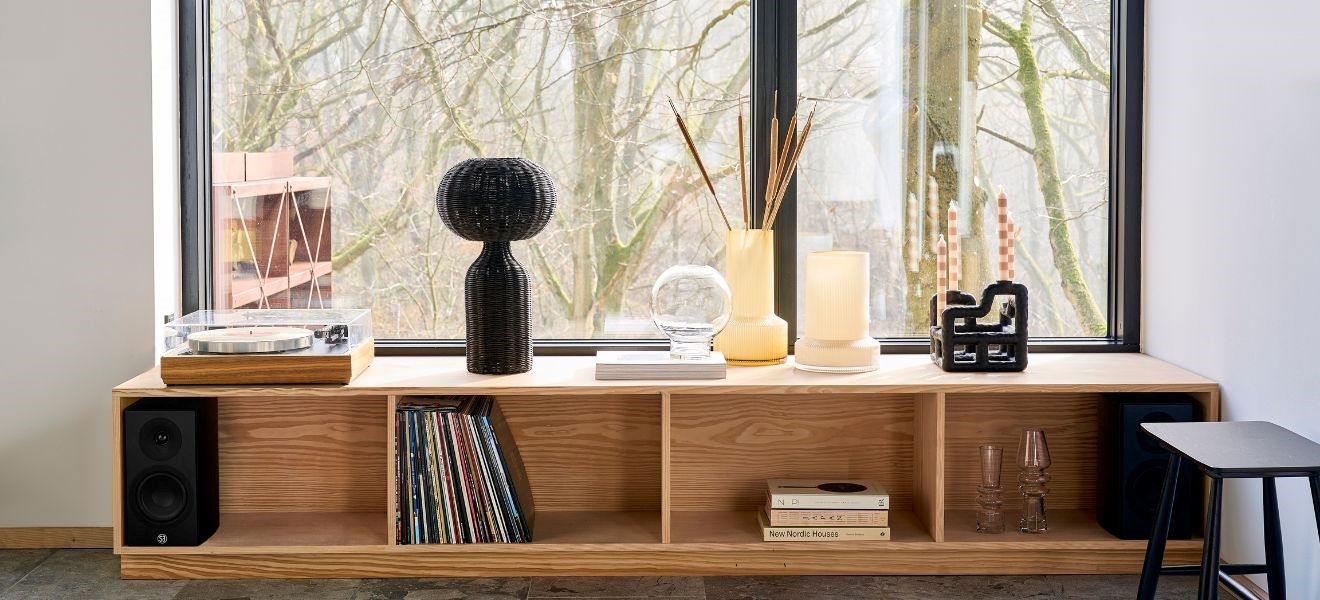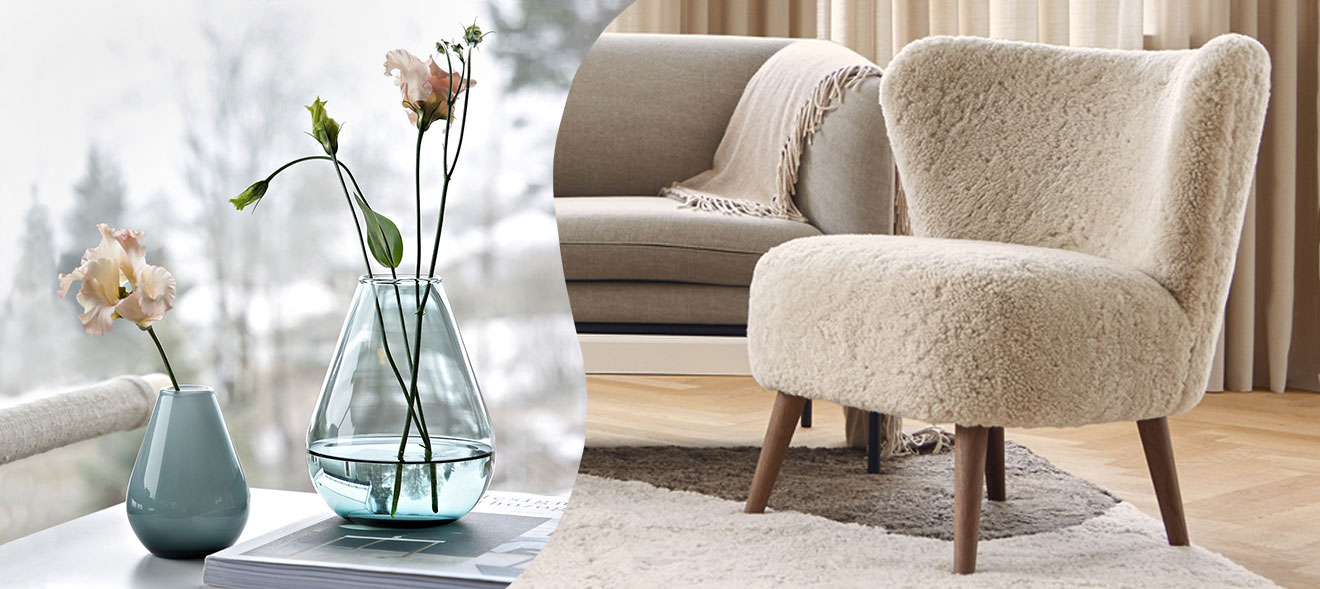Louder, brighter and more radical – the wildly glam 80s are back, reminding us of an era in which furniture became a status symbol, and designers made a bid for freedom by kicking against the established visual rules. Nothing was impossible, and glamour knew no bounds.


Gigantic lips, oversized lipsticks, a pink ice-cream parlour and inflatable flamingos: when cosmetic brand Sephora celebrated its tenth anniversary in 2018, it staged a major playground paradise by transforming a dull and dreary 700m² event arena in Singapore. The Sephora Playhouse with its neon lights and coin-operated phones made the perfect backdrop for social media posts – and clearly referenced the 1980s. It’s no coincidence that this was a recent event. Now that the eighties are further in the past, they appear more resonant, euphoric and inviting. They’re inviting not only for the generations who experienced them, but also for younger generations. Everyone wants to be sprinkled with 80s magic, to experience that feelgood sensation which this decade left behind. For some, this is a chance to relive the sheen of their youth; for others it’s a reference point in an increasingly dizzying world in motion.
2 Blender by Smeg
3 Champagner saucer by LSA International
4 Liquorice by Lakrids by Bülow
5 Carpet by KARE
6 Figurine by Gift Company
2 Blender by Smeg
3 Champagner saucer by LSA International
4 Liquorice by Lakrids by Bülow
5 Carpet by KARE
6 Figurine by Gift Company
Vintage looks are a sign of the times
The 1980s are a rewarding period. Firstly, because fashion and interiors from the 1950s to the 1970s have already been thoroughly explored, and secondly because the 80s offered a bold stylistic mixture which left significant scope for interpretation. In fashion, shoulders were the most important part of the body, and clothes included tucks and puff sleeves, with printed logos on each item. In today’s athleisure era, when sportswear sits easily alongside everyday clothing, cult brands like Ellesse are experiencing a major revival. In terms of interiors, designers such as David Alhadeff, Cristina Celestino and Nina Yashar are bringing back the 80s with bold, expressive colours and textures plus unusual shapes (you can see this in the book ‘The House of Glam – Lush Interiors & Design Extravaganza’ by Gestalten). New labels such as Korean eyewear manufacturer Gentle Monster are also playing with the 80s vibe in their stores. Vintage looks are now a sign of the times. Fleecy pop art adorn floors and walls like objets d’art, while golden animal sculptures act as statement pieces.


2 Bracelet by D&X London
3 Ring by Chebu
4 Sunglasses by Swarovski
5 Mirror by Andrea House
6 Boots by Ebarrito
7 Handbag by Hi-di-hi

Furniture everyone’s talking about
The 80s turned furniture into status symbols, whose looks were more important than their function. Who could forget Philippe Starck’s 1987 lemon squeezer for Alessi, which looked like a space rocket, but didn’t really work? That wasn’t the point, it was intended as a conversation starter. These days, we needn’t do without the functionality. Whether handbags or furniture – bold is in fashion: Andrea House has designed a mirror with copious fringes, and Ebarrito has brought out a lamé-look heeled boot. These are ideal accessories for a new generation who want to rediscover Baywatch and Miami Vice for themselves. And it was the cult series Miami Vice which catapulted the American metropolis to fame as the capital of cool. This phenomenon has re-emerged in the much smaller city of Reykjavik: it is home to Bar Miami, with an interior reminiscent of a Miami Vice set.

In the cellar, there’s a ‘ping pong room’ inspired by Memphis, not an American city this time but an Italian postmodern movement. It can be seen as a reaction against straight-line, mid-century design and a break with traditional forms – as well as any sense of good taste! The geometric art deco patterns, the colours of pop art, and kitsch from the 1950s all inspired the movement’s unusual aesthetic. Although the Memphis Group founded by Ettore Sottsass was well known in Italy at the time, their furniture was not widespread, as it was far too radical. Now their designs are celebrated and achieve very high prices at auctions. Work by famous designers such as Ettore Sottsass, Ron Arad and Toshiyuki Kita are in demand like never before. They moved away from purist modernism and freed design from its previous strictures. Many people today miss that kind of radicalism.


2 Champagne glass by Collevilca
3 Flower pot by Casablanca
4 Table lamp by Eichholtz
5 Chair by Mauro Ferretti
6 Centerpiece by Evans Atelier
2 Champagne glass by Collevilca
3 Flower pot by Casablanca
4 Table lamp by Eichholtz
5 Chair by Mauro Ferretti
6 Centerpiece by Evans Atelier
80s Glam with metallic dresses and coral earrings
The 1980s weren’t the same everywhere; different facets came to the fore in different countries. Whereas Italy had the Memphis movement around Ettore Sottsass, with its joyous colours and playful attitude, black and chrome loomed large in Germany. In France, the emphasis was very much on glitz and glamour. Furniture and lighting which grab our attention are also part of the elegant 80s look and are now very much in demand – alongside metallic dresses and coral earrings. These include the emerald table lamp with crystal glass base by Eichholtz, with its suede shade like a jewel, set against the champagne flutes from Collevilca and tabletop clock from Royal Doulton. Yet more objects are rediscovering their former glory, including table centrepieces. This French invention from the 1690s was celebrated with gusto in the 1980s and is now making a comeback onto our tables. Centrepieces are design objects in themselves, like this one from Evans Atelier. They are often made of silver or partially gilded, and their sole purpose is to be decorative.

2 Carpet by Broste Copenhagen
3 Pillow by Riviera Maison
4 Chair by Tom Dixon
2 Carpet by Broste Copenhagen
3 Pillow by Riviera Maison
4 Chair by Tom Dixon
The 1980s also had a more modest side, a hangover from the preceding 1970s. Earth shades and exposed concrete were combined with linear steel constructs, and inviting sofas were combined with the softest cushions. This world is given a glamorous, contemporary interpretation at Bar Feroce in the Moxy Hotel in Chelsea, New York. It combines classical statues in unusual poses (such as taking a selfie) with a seemingly random selection of objects which bring movement to the space and hint at the natural world. There’s a lot to discover, and yet the room manages to avoid looking cluttered. The 1980s loved the quirky and outlandish. Maybe a rocking chaise longue by Tom Dixon shaped like a bird? Or an objet from Light & Living which looks like a tortoise shell? How about a golden, leopard-print cushion from Riviera Maison? If 1980s post-modernism taught us anything, it’s that nothing is impossible.









